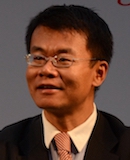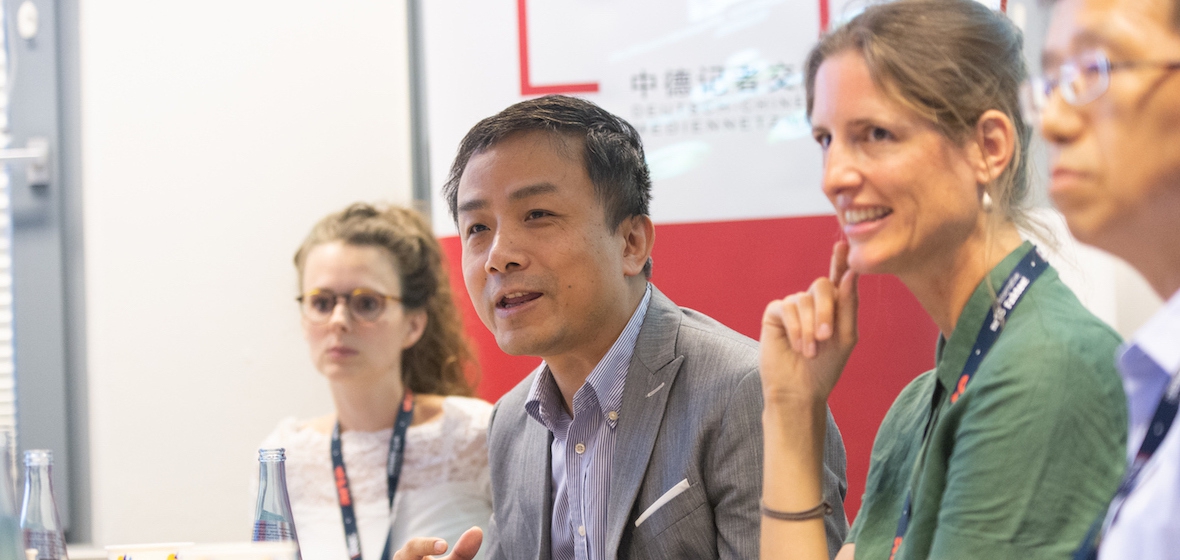Historically, the endeavors of reshaping global communication are characterized by the following landmark events: the United Nations Educational, Scientific and Cultural Organization (UNESCO) debate, spanning the 1970s and early 1980s, known as “New World Information and Communication Order” (NWICO), and the more recent International Telecommunications Union (ITU) sponsored negotiations at the “World Summit on Information Society” (WSIS), with the Phase I held in Geneva, 2003 and Phase II in Tunis, 2005. However, these two good-willed ambitious agendas which ended up in futility and barely turned into reality appear even more obsolete and outdated against the constant changing landscape of global geopolitics and economy since 2008, with China’s rise and the diminishing US hegemony at its core.
As globalization and mediatization constitute the cornerstones of the new millennium, China’s recent efforts to construct the “United Nations of Media” (UNM) as “Community of Common Destiny” (CCD) not merely represent the new orientation away from the historical and geopolitical continuities to a remapping of the global communication, but also makes clear the disjuncture from historical legacies of NWICO and WSIS. Consequently, Chi-globalization, in contrast with Anglobalization and Americanization, looms larger as the main avenue to bridge the “communication gap” between the global North and South, thereby materializing the unfulfilled promises of NWICO and WSIS.
China’s Duality and Chi-Globalization: Laying Groundwork for Remapping Global Communication
As one of five permanent members of the UN Security Council, China was conspicuously absent from both NWICO and WSIS debates due to her domestic and international restraints in the past three decades. Since 2008, China’s re-emergence as a global power and her duality as a “developing developed nation” have further complicated the reorganization of geopolitical and economic order, thereby consolidating her unique role in bridging the economic and communication gap between the global North and South, and in remapping the topography of global communication.
Among all the sectors of media industry, film and the Internet in China are conspicuously skyrocketing as major rivals to the long-standing US hegemony. In 2015, China has secured her position as the second largest film market with the annual box-office revenue of 44 billion RMB (7.3 billion US$). During the 2015 Lunar New Year holidays (February) and the Golden Week holidays (October) the monthly box office revenues surpassed the revenues in the US and made China the world’s No. 1 film market. One may assume that China might become the world‘s largest film market by 2017.
Among the top ten global Internet giants the four Chinese companies Baidu, Alibaba, Tencent and JD360 are vying with the six US moguls Google, Amazon, Facebook, Apple, Microsoft and Cisco. The competition between these two camps, demarcated by the notorious “Great Firewall of China”, lays a solid groundwork for the co-governance of the cyberspace by China and the US, while largely excluding the European Union (EU) and Japan, let alone the less developed nations, from any serious debate on the policy-making for the Internet governance.
Since China, in terms of her socioeconomic condition, currently shows aspects of both developed and developing countries, the Chinese media industry has also been endowed with a duality of being a developed and developing market. Despite the above-mentioned achievements in the sectors of the film and the Internet industry, Chinese media organizations are mostly obscure to the global audience. Equipped with three headquarters in Beijing, Washington D.C. and Nairobi and over 60 overseas branch offices, CCTV is still unable to compete with the Qatar-based Al Jazeera and Russia Today, let alone BBC or CNN, in terms of global influence in opinion making and brand loyalty among the world’s audience. By the same token, Chinese feature films are still rarely seen in the mainstream cinemas in Europe and North America, even if Wang Jianlin, China’s richest tycoon, has purchased major theater lines in North America, Australia and the UK.
Constructing UNM as CCD: Mapping the Alternative to NWICO and WSIS
China’s endeavor of remapping global communication is reflected in the attempts to construct a “United Nations of Media” (UNM) in which every country should have an equal share of voice and vote in the global media space. This idea is clearly in line with President Xi’s visions of a “Community of Common Destiny”. Li Congjun, the former president of Xinhua News Agency, proposed the concept of a United Nations of Media in an article published in The Wall Street Journal on June 1, 2011. At the core of this idea is the FAIR doctrine, which consists of the four basic principles fairness, all-win, inclusiveness and responsibility and which embodies multilateralism and co-culturalism devoid of the binary dichotomies embedded in the NWICO and WSIS debates.
The China-initiated agenda of promoting nation-based cyber-sovereignty and co-governance has been upgraded into a cosmopolitan-oriented vision of “Community of Common Destiny” (CCD) in cyberspace in President Xi Jinping‘s keynote speech during the 2nd World Internet Conference Wuzhen Summit on December 16, 2015. In his definition, the Charter of the United Nations with the concept of national sovereignty at its core is conveniently applied into the virtual world, thereby legitimatizing China’s promotion of cyber-sovereignty. In this light, each nation is endowed with the absolute right to choose its own model of Internet development and governance, obviously lending a tactful excuse to China’s notorious “firewall” which blocks nearly all Western hi-tech moguls including Google, Facebook, Twitter, and YouTube from Chinese netizens. To enhance the moral appeal and ethical legitimacy of China’s “Internet philosophy”, which puts priority on national sovereignty over free flow of information beyond geopolitical boundaries, Xi shed limelight on the centrality of cyber-security, stemming from the clear-cut cyber-sovereignty and viable co-governance, which would be more understandable to the Western liberals’ ears in the aftermath of the Islamic States’s recent graphic atrocities circulated via social media, and the Paris terrorist attack on November 13, 2015.
Strikingly enough, it is precisely Xi’s foregrounding of CCD that distinguishes the agenda of UNM from NWICO and WSIS. If NWICO highlighted the national sovereignty, and WSIS was built upon neoliberalism, the agenda of UNM as CCD would transcend from the age-old dichotomies both between the state and the market and between the West and the rest, thereby laying bare the very essence of the Internet, that is, interchangeable and interconnected. To a broader extent, CCD in the cyberspace is not a vacuous illusion, but rather remains part and parcel to the “One Belt One Road” initiative bolstered by the Beijing-based Asian Infrastructure Investment Bank (AIIB), which bridges the long-standing gap between the West and the rest with the active participation of 57 countries from Asia, Europe, Africa, South America and Oceania by the end of 2015. Notably, the UK became the first Western power to join the AIIB and was followed by France and Germany. On the other hand, the Philippines, despite recent territorial controversies over the South China Sea, sealed the legal membership on December 31, 2015 and became the AIIB’s latest member. With its operation in January 2016, more countries would be expected to join in this China-contrived CCD.
All in all, the agenda of constructing a “United Nations of Media” as a “Community of Common Destiny” inherits from the legacies of MWICO and WSIS and furthermore, registers a cosmopolitan turn of reshaping global communication. Diverged from the Utopian vision of NWICO which lacked solid infrastructural foundation, UNM would be materialized as part and parcel of the “One Belt One Road” initiative under the aegis of the AIIB. Moreover, UNM’s disjuncture from WSIS is embodied in the former’s recognition of national government as a key player and henceforth of maintaining cyber-sovereignty as the vital and viable factor in the course of institutionalizing global governance. Despite being a tentative blueprint which needs arduous implementation and further revision, the China-initiated agenda of constructing UNM as CCD remains central to Chi-globalization, which does not mean so much to replace the US with an emergent hegemon but to provide an exigent alternative to a transnational capitalist world order in the post-American century.
8th August 2016
 SHI Anbin is currently Ministry of Education’s Changjiang Endowment Professor of Global Media and Communication Studies, Associate Dean of International Development with School of Journalism and Communication, and Director of Israel Epstein Center for Global Media and Communication, Tsinghua University, China.
SHI Anbin is currently Ministry of Education’s Changjiang Endowment Professor of Global Media and Communication Studies, Associate Dean of International Development with School of Journalism and Communication, and Director of Israel Epstein Center for Global Media and Communication, Tsinghua University, China.